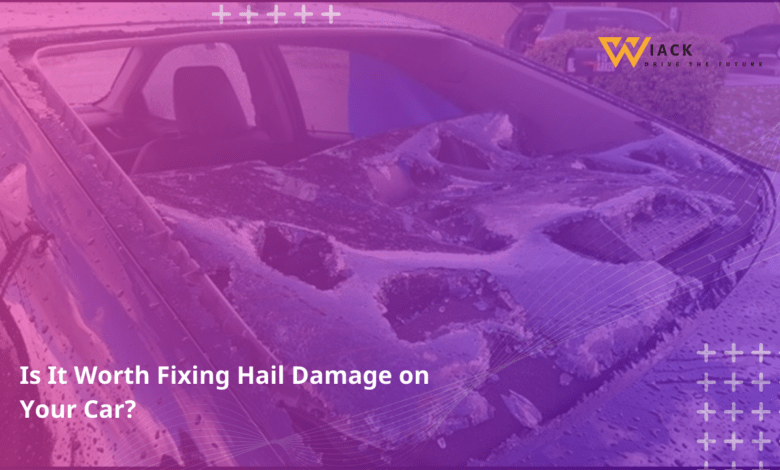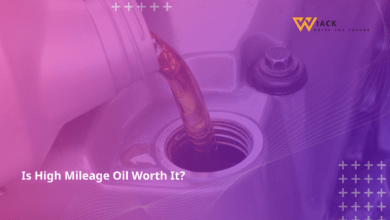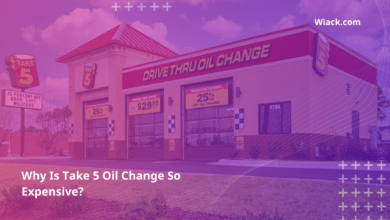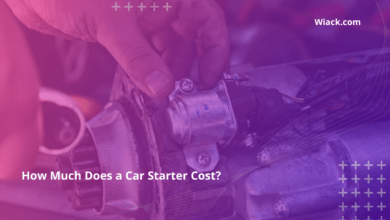Is It Worth Fixing Hail Damage on Your Car?

Did you know that hail storms cause between $8 billion and $14 billion in damage to vehicles each year in the United States? This staggering statistic highlights the widespread impact of hail damage on cars and the difficult decisions many car owners face in its aftermath. If you’ve recently experienced hail damage to your vehicle, you may be wondering: Is it worth fixing hail damage on your car? This comprehensive guide will help you navigate this complex decision, considering various factors that can influence your choice.
Assessing the Damage
Before deciding whether to repair hail damage, it’s crucial to thoroughly assess the extent and nature of the damage. This evaluation will form the foundation of your decision-making process.
Severity of the Damage
The severity of hail damage can vary widely, from minor dings to major dents and even structural damage. Here’s how to categorize the severity:
- Minor damage: Small dents or dings, typically less than 1 inch in diameter
- Moderate damage: Larger dents, 1-3 inches in diameter, or multiple small dents
- Severe damage: Large dents over 3 inches, cracked paint, or structural damage
To assess the severity, carefully inspect your vehicle in good lighting. Use a flashlight to highlight dents and run your hand over the surface to feel for irregularities. Remember, some damage may not be immediately visible but can worsen over time.
Location of the Damage
The location of hail damage on your car can significantly impact both repair costs and the urgency of repairs. Consider these areas:
- Hood, roof, and trunk: These horizontal surfaces often bear the brunt of hail damage. Damage here is highly visible but may be easier to repair.
- Doors and side panels: Damage to these areas can affect functionality and may be more challenging to repair.
- Windows and lights: Cracked or shattered glass and damaged lights pose immediate safety concerns and require prompt attention.
Make a detailed note of where the damage is located on your vehicle. This information will be valuable when obtaining repair estimates and deciding on the best course of action.
Type of Damage (Cosmetic vs. Structural)
Understanding the type of damage your car has sustained is crucial in determining whether repairs are necessary and cost-effective. Here’s how to differentiate:
Cosmetic damage:
- Dents and dings that don’t affect the car’s performance or safety
- Minor paint chips or scratches
- Slight misalignment of body panels
Structural damage:
- Cracked or shattered windows
- Damaged frame or body structure
- Compromised safety features (e.g., airbag sensors)
While cosmetic damage may seem less urgent, it can lead to more serious issues if left unaddressed. For example, paint damage can expose the metal underneath to rust and corrosion. Structural damage, on the other hand, requires immediate attention to ensure your vehicle remains safe to drive.
Financial Considerations
Once you’ve assessed the damage, it’s time to consider the financial implications of repairing hail damage. This section will help you understand the costs involved and how they might impact your decision.
Cost of Repair
The cost of repairing hail damage can vary significantly based on the severity and extent of the damage. Here’s a general breakdown of what you might expect:
- Minor damage: $50 – $150 per dent
- Moderate damage: $150 – $500 per dent
- Severe damage: $500+ per dent, with total repairs potentially costing thousands of dollars
Keep in mind that these are rough estimates. The actual cost can be influenced by factors such as:
- Your vehicle’s make and model
- The repair method used (e.g., paintless dent repair vs. traditional body work)
- Your location and local labor rates
To get a more accurate estimate, it’s best to consult with multiple reputable auto body shops. Many offer free estimates, allowing you to compare costs and services.
Insurance Coverage and Deductible
If you have comprehensive auto insurance, hail damage is typically covered. However, there are several factors to consider:
- Deductible: Your out-of-pocket cost before insurance kicks in. If your deductible is $1,000 and the repair cost is $1,500, you’ll pay $1,000 and insurance will cover the remaining $500.
- Claim impact: Filing a claim may increase your future premiums, although hail damage claims are often considered “no-fault” and may have less impact.
- Claim limits: Some policies have limits on how much they’ll pay for hail damage repairs.
Before deciding to file a claim, consider:
- Will the repair cost exceed your deductible?
- How might a claim affect your future premiums?
- Do you have any other recent claims that could compound the impact?
It’s often helpful to speak with your insurance agent to understand the full implications of filing a claim for hail damage.
Impact on Resale Value
Hail damage can significantly impact your car’s resale value, even if the damage is purely cosmetic. Here’s what you need to know:
- Diminished value: Hail damage, even when repaired, can reduce a car’s value by 10-15% or more.
- CarFax reports: Hail damage claims are often reported on vehicle history reports, which can deter potential buyers.
- Trade-in value: Dealerships may offer significantly less for cars with a history of hail damage.
Consider your long-term plans for the vehicle. If you intend to sell or trade in your car soon, repairing hail damage could help maintain its value. However, if you plan to keep the car for many years, the impact on resale value may be less of a concern.
Practical Considerations
Beyond the financial aspects, there are practical considerations to weigh when deciding whether to repair hail damage. These factors can affect your day-to-day experience with your vehicle and its long-term reliability.
Safety Concerns
While minor hail damage may not pose immediate safety risks, more severe damage can compromise your vehicle’s safety features. Consider the following:
- Cracked windshield: Even small cracks can spread, obstructing your view and weakening the structural integrity of the windshield.
- Damaged lights: Cracked headlights, taillights, or turn signals can reduce visibility and may not meet legal requirements.
- Airbag sensors: Severe hail damage could potentially affect airbag sensors, compromising this crucial safety feature.
If your vehicle has sustained any damage that could affect its safety systems, prioritize these repairs. Your safety and that of your passengers should always come first.
Driving Experience
Hail damage can impact your overall driving experience in several ways:
- Aesthetics: Visible dents and dings can be a constant reminder of the damage, potentially diminishing your enjoyment of the vehicle.
- Noise and vibration: Severe damage can alter the car’s aerodynamics, leading to increased wind noise or vibrations at high speeds.
- Water leaks: Damage to seals around windows or sunroofs can lead to water leaks during rain or car washes.
Consider how these factors might affect your daily commute or long trips. If the damage significantly impacts your driving experience, repairs may be worth the investment for your comfort and peace of mind.
Time Commitment
Repairing hail damage can be a time-consuming process. Here’s what to expect:
- Assessment and estimates: 1-2 hours per shop
- Insurance claim processing: 1-3 days
- Repair time:
- Minor damage: 1-2 days
- Moderate damage: 3-5 days
- Severe damage: 1-2 weeks or more
Additionally, you may need to arrange alternative transportation while your car is being repaired. Consider whether you have the time and flexibility to manage without your vehicle during the repair process.
Alternatives to Repair
If you’re unsure about repairing the hail damage, there are alternatives to consider. These options may be more suitable depending on your specific situation and priorities.
Leaving the Damage Unrepaired
In some cases, you might choose to leave minor hail damage unrepaired. Consider this option if:
- The damage is purely cosmetic and doesn’t bother you
- Repair costs exceed the value of the vehicle
- You plan to keep the car for many more years and aren’t concerned about resale value
However, be aware of potential risks:
- Unrepaired damage could lead to rust or corrosion over time
- Future insurance claims might be complicated if new damage occurs in the same areas
If you choose this route, consider applying a clear protective sealant over any exposed metal to prevent rust.
Selling the Car as Is
Another option is to sell your hail-damaged car as is. This might be a good choice if:
- Repair costs are prohibitively expensive
- You were already considering selling or upgrading your vehicle
- You find a buyer who’s willing to purchase the car at a discounted price
When selling a hail-damaged car:
- Be transparent about the damage in your listing
- Price the car competitively, accounting for the cost of repairs
- Consider selling to a dealership or car-buying service that specializes in damaged vehicles
Remember that you’ll likely receive less for a hail-damaged car than you would for one in pristine condition, but this option can save you the time and expense of repairs.
Conclusion
Weighing the Pros and Cons
As we’ve explored, the decision to repair hail damage on your car involves numerous factors. Let’s summarize the key pros and cons:
Pros of repairing hail damage:
- Maintains or restores your car’s value
- Prevents potential long-term issues like rust
- Improves aesthetics and driving experience
- Addresses any safety concerns
Cons of repairing hail damage:
- Can be expensive, especially for severe damage
- May require a significant time commitment
- Could potentially increase insurance premiums
Making an Informed Decision
Ultimately, the decision to repair hail damage on your car is a personal one that depends on your unique circumstances. Consider the following questions:
- How severe is the damage, and does it affect the car’s safety or functionality?
- Can you comfortably afford the repairs, either out-of-pocket or through insurance?
- How long do you plan to keep the car, and how important is its resale value to you?
- Does the damage significantly impact your enjoyment of the vehicle?
By carefully weighing these factors and the information provided in this guide, you can make an informed decision about whether fixing hail damage on your car is worth it for you.
Remember, there’s no one-size-fits-all answer to the question “Is it worth fixing hail damage on your car?” What matters most is that you choose the option that best aligns with your financial situation, long-term goals, and personal preferences. Whether you decide to repair the damage, leave it as is, or explore other options, being well-informed will help you feel confident in your choice.
Get the latest car news, reviews, and prices at Wiack.com. Your one-stop destination for all things automotive.





